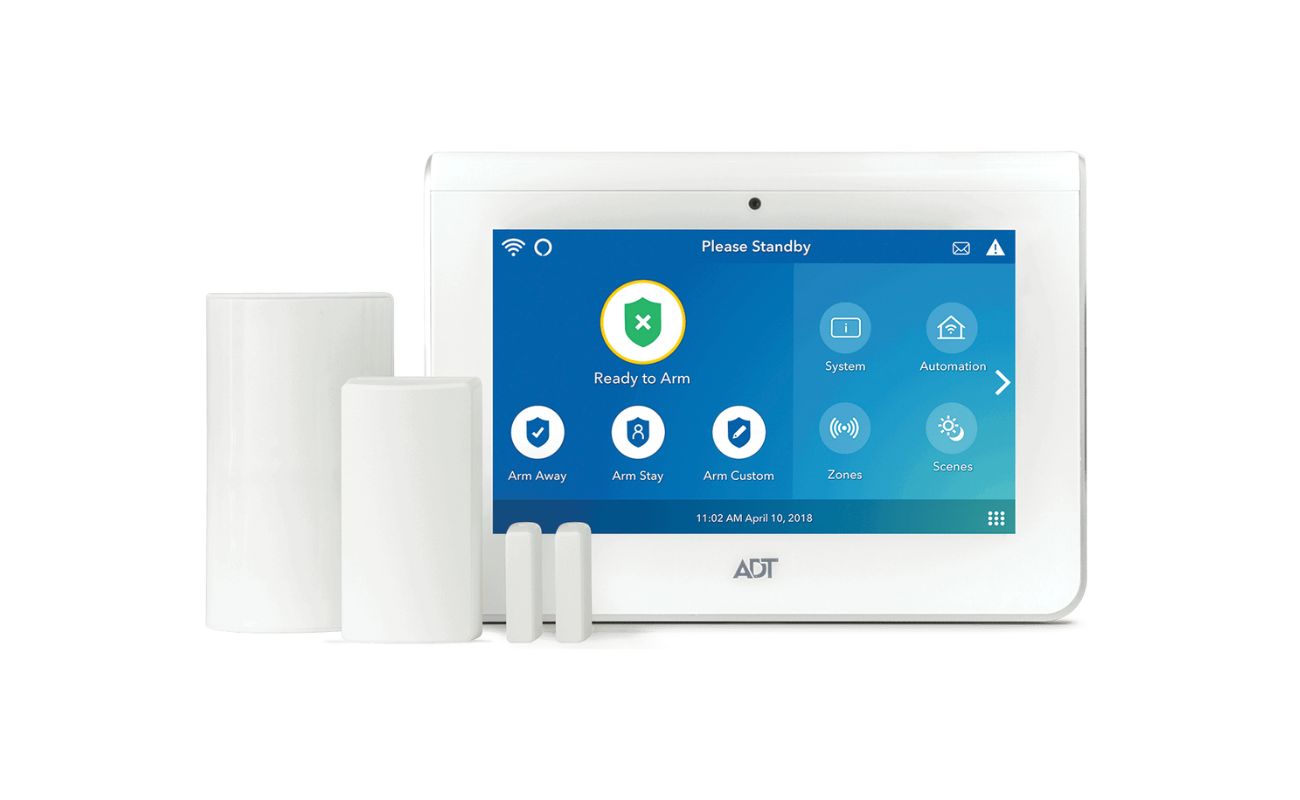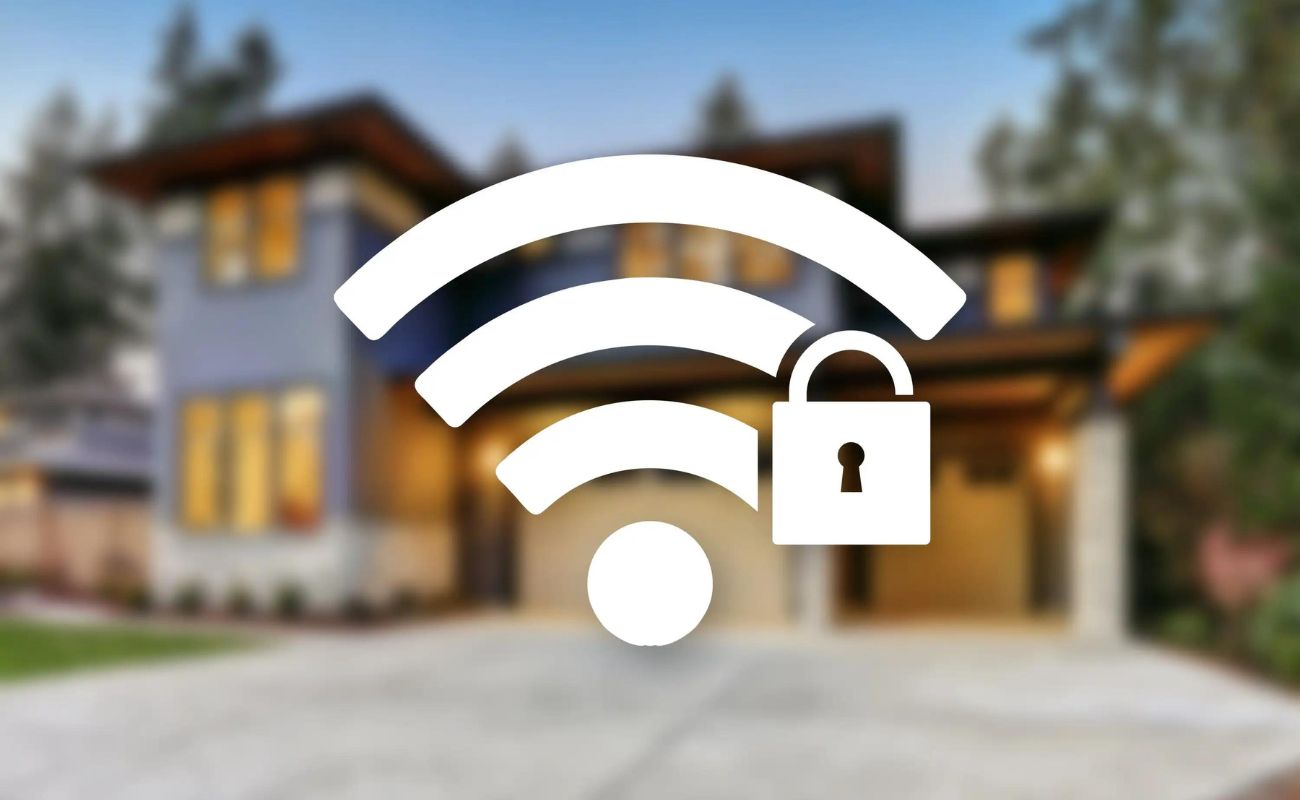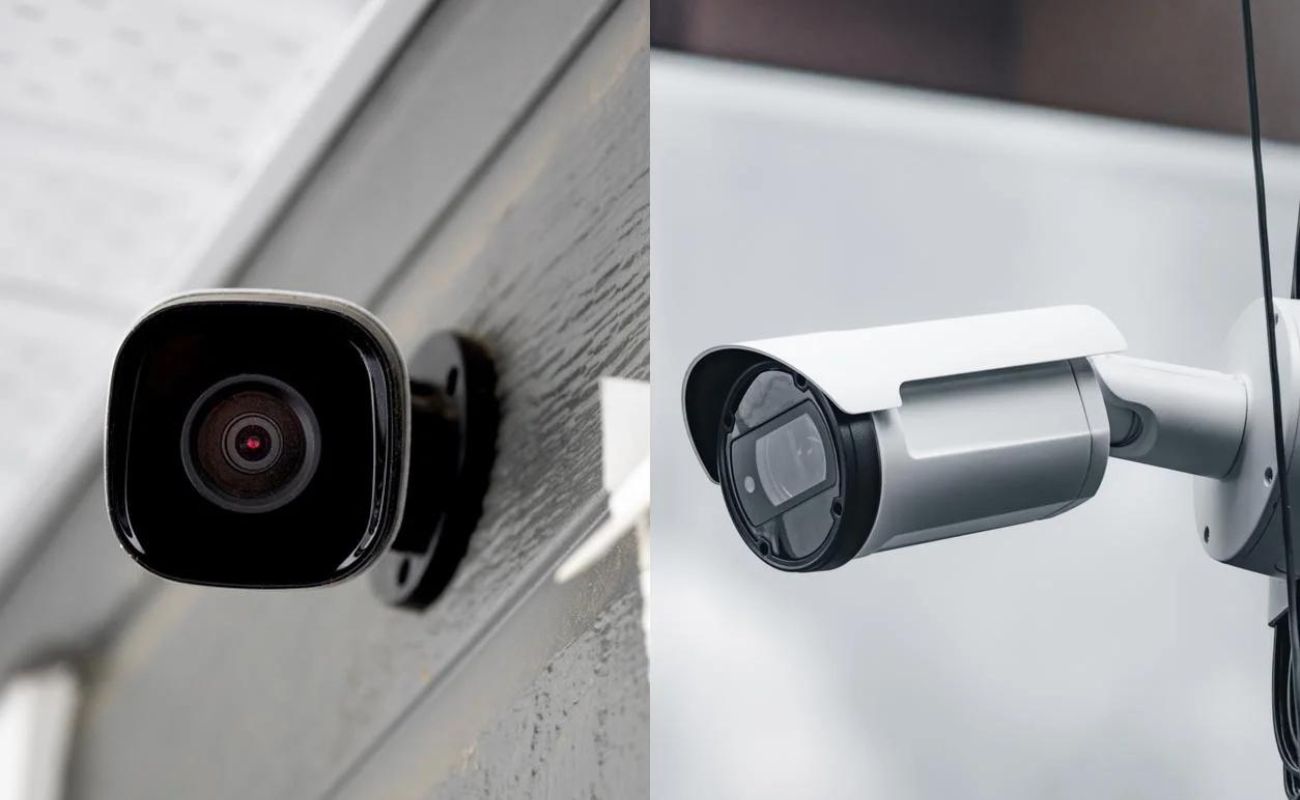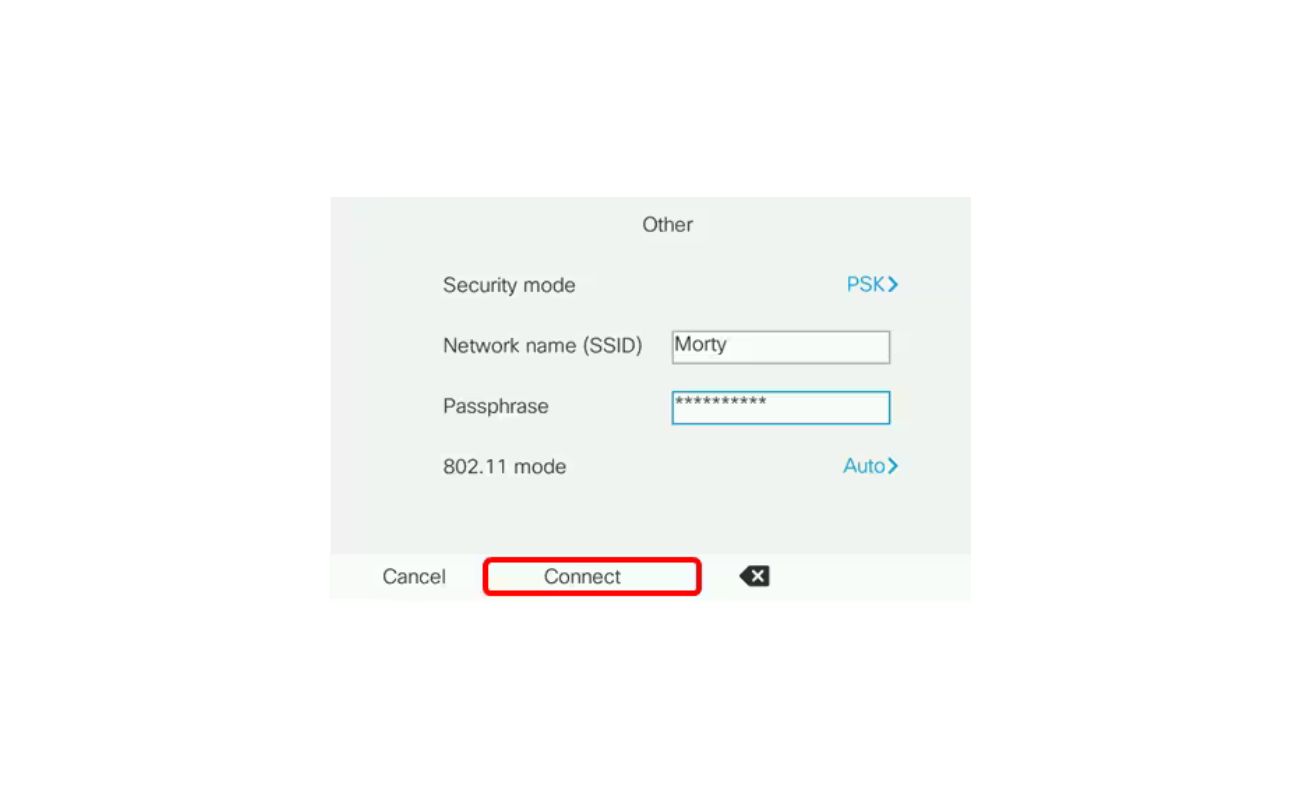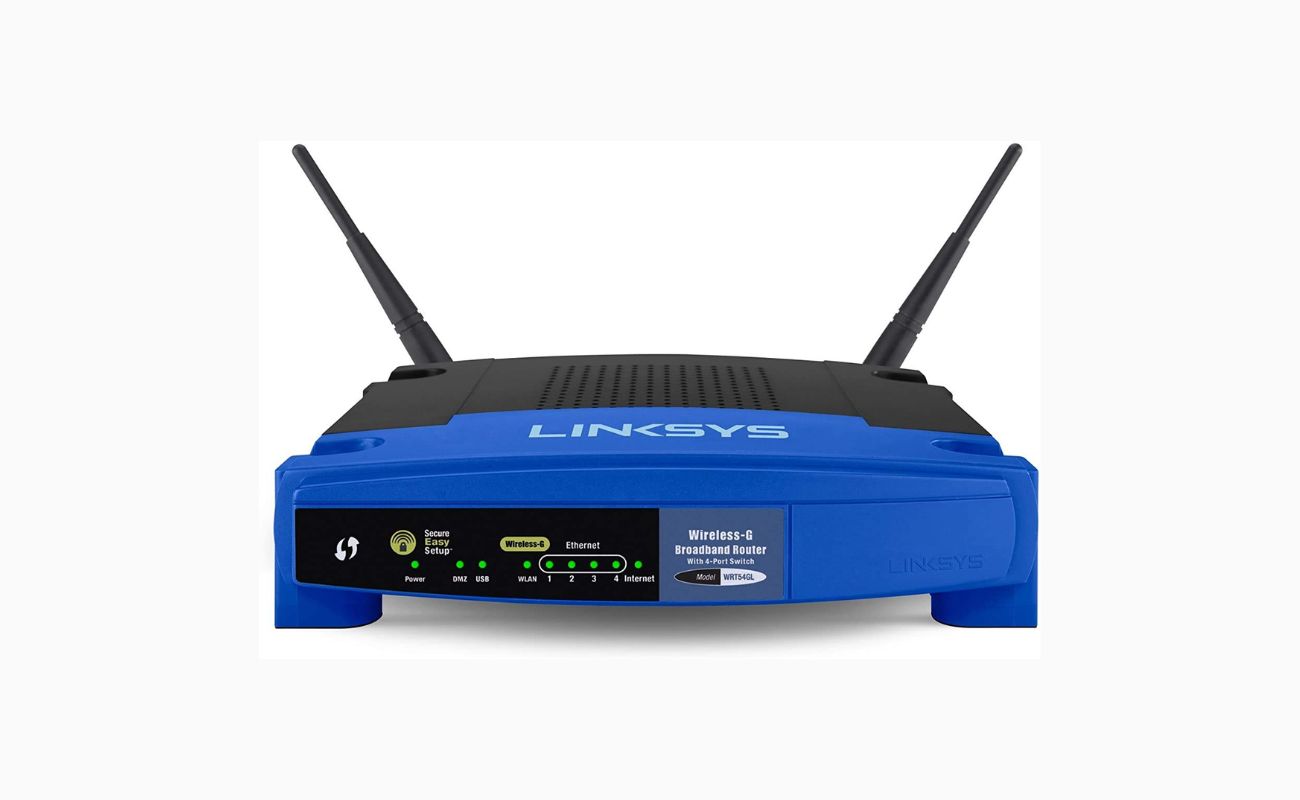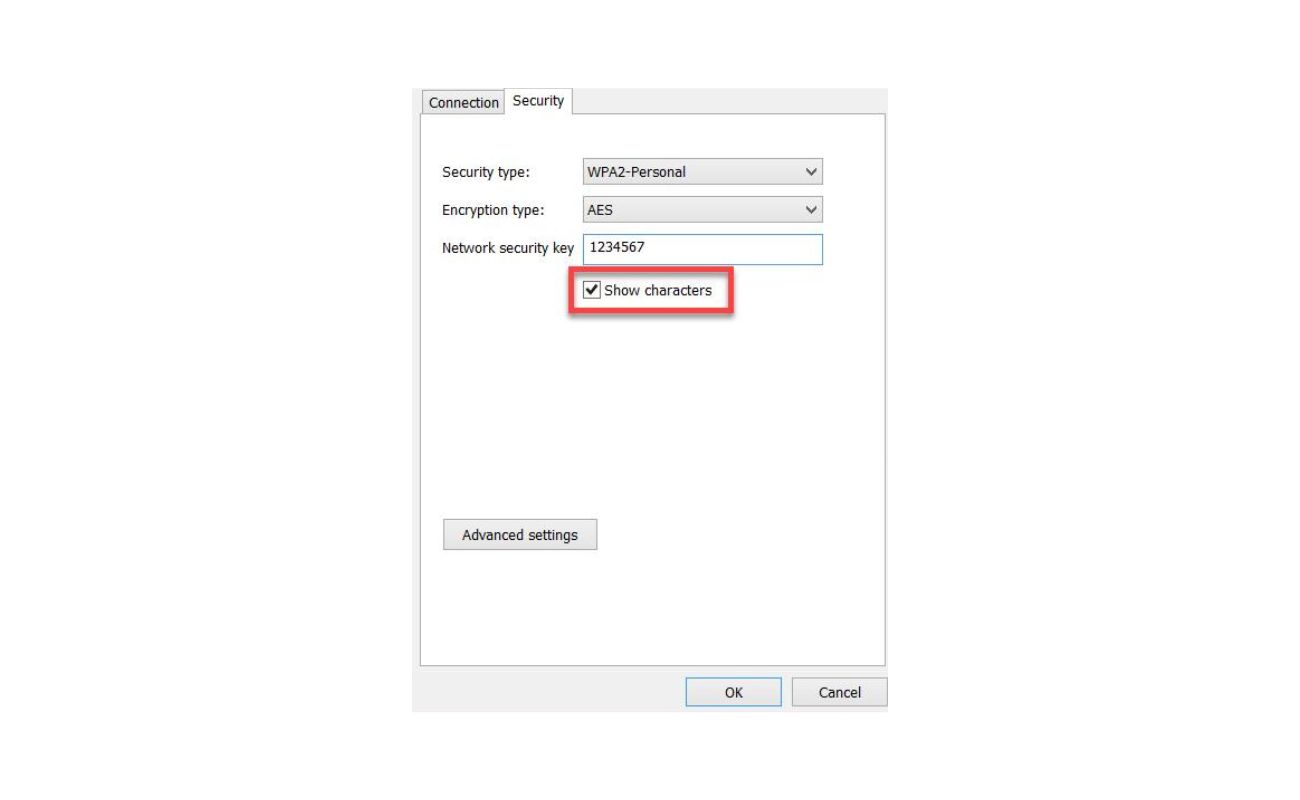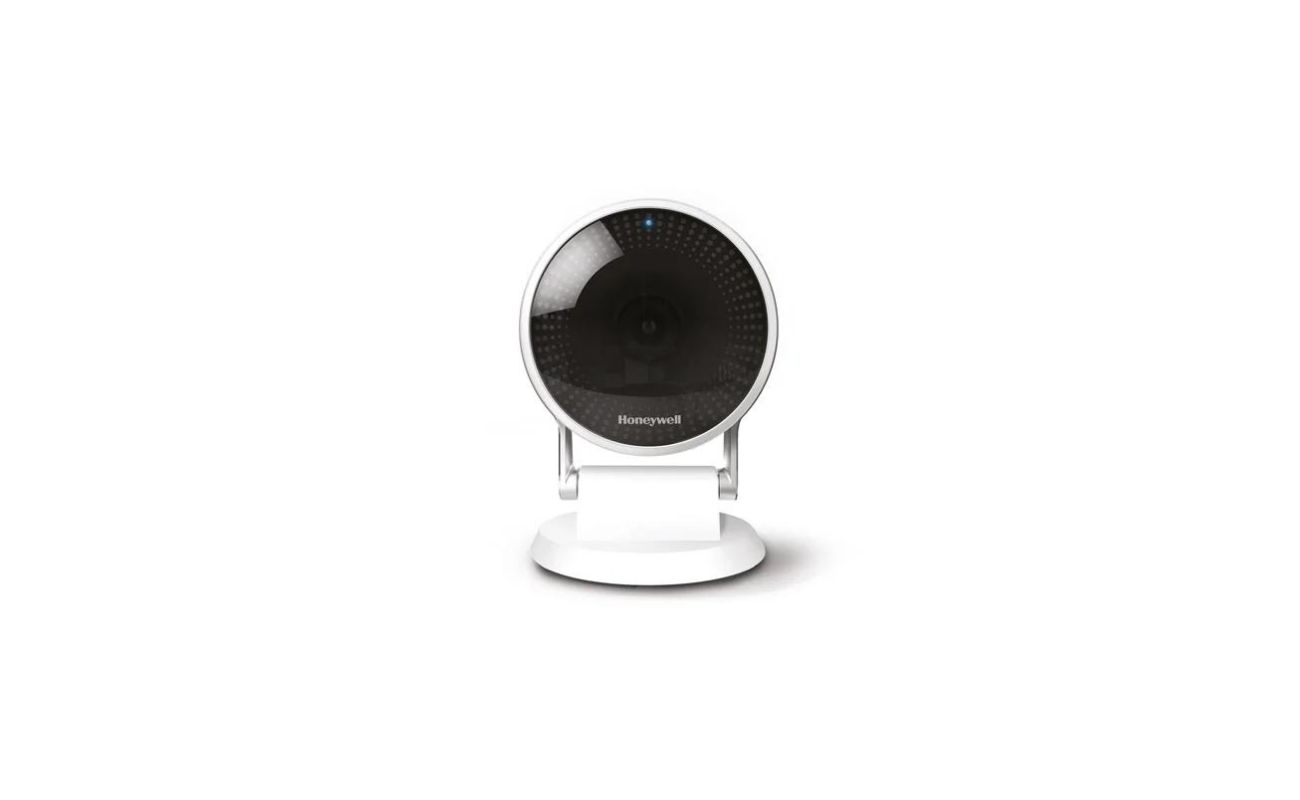Home>Home Security and Surveillance>How To Disarm Wireless Security System
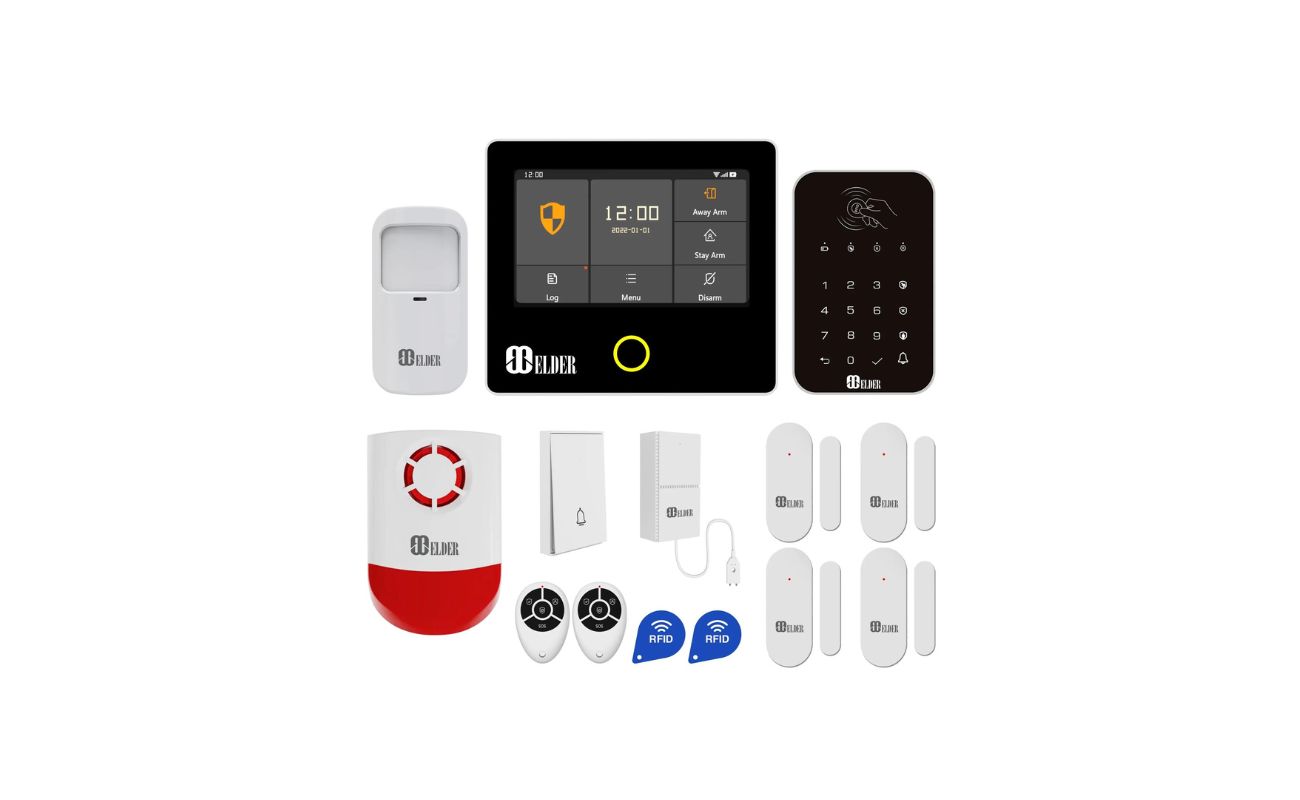

Home Security and Surveillance
How To Disarm Wireless Security System
Modified: March 6, 2024
Discover how to effectively disarm your wireless home security system with our step-by-step guide. Ensure the safety and security of your home with our trusted home security and surveillance solutions.
(Many of the links in this article redirect to a specific reviewed product. Your purchase of these products through affiliate links helps to generate commission for Storables.com, at no extra cost. Learn more)
Introduction
Welcome to the world of home security and surveillance! In today’s fast-paced and digitalized society, protecting our homes and ensuring the safety of our loved ones has become a top priority. One of the most popular and effective solutions for home security is the wireless security system.
Wireless security systems offer convenience and flexibility, allowing homeowners to monitor their property and receive alerts remotely. With the advancement of technology, these systems have become more sophisticated, offering a wide range of features such as motion detection, video surveillance, and even integration with smart home devices.
However, despite the numerous benefits, there may be instances where you need to disarm your wireless security system. Whether it’s due to a false alarm, maintenance, or simply needing to turn it off for a specific period, understanding how to properly disarm your system is crucial.
In this article, we will provide a comprehensive guide on disarming a wireless security system. We will explore the various components of a wireless security system, assess its vulnerabilities, and go through step-by-step instructions on disarming the system. Additionally, we will discuss common challenges that may arise during this process and provide tips on how to overcome them.
By the end of this article, you will have a solid understanding of how to disarm your wireless security system confidently and effectively. Let’s dive in and discover the world of home security and surveillance!
Key Takeaways:
- Disarming a wireless security system involves understanding its components, assessing vulnerabilities, and following a step-by-step guide. Remember to gather necessary tools and overcome common challenges for a smooth disarming process.
- By being proactive and attentive, you can confidently manage your wireless security system. Consult the user manual, use the security system app, and seek support when needed to ensure safety and peace of mind.
Understanding Wireless Security Systems
A wireless security system is a modern and convenient solution to protect your home or business. Unlike traditional wired security systems, wireless systems use radio frequency signals to communicate between different components, including sensors, control panels, and monitoring devices.
One of the key advantages of a wireless security system is its flexibility. Without the need for complex wiring, installation is quick and hassle-free. This makes wireless systems ideal for both homeowners and renters alike, as they can easily be moved from one location to another.
Wireless security systems typically consist of several components, all working together to provide comprehensive protection. These components include:
- Control Panel: The central command center of the wireless security system. It allows you to arm or disarm the system, configure settings, and receive alerts.
- Sensors: These devices detect various events such as motion, door/window opening, glass breakage, or smoke. They send signals to the control panel to trigger appropriate actions.
- Keypad or Key Fob: These devices allow you to conveniently arm or disarm the system, typically located near entry points or in a central area.
- Camera: Some wireless security systems include video surveillance cameras to monitor specific areas. These cameras can provide both live-streaming and recorded footage.
- Alarm: In the event of a breach or detection, the alarm will sound both inside and outside the property, alerting occupants and deterring intruders.
Wireless security systems offer various features and customization options to fit your specific needs. Many systems allow you to integrate additional devices such as motion sensors, environmental sensors (for temperature and humidity), or even smart home devices for enhanced control and automation.
One of the concerns regarding wireless security systems is their vulnerability to hacking or signal interference. However, technology advancements have made these systems more secure, employing encryption and authentication protocols to mitigate these risks.
Now that we have a clear understanding of wireless security systems and their components, let’s explore how to identify these components within your own system to ensure a smooth disarming process.
Identifying the Components of a Wireless Security System
Before you can proceed with disarming a wireless security system, it is important to familiarize yourself with the various components that make up the system. By understanding these components and their functions, you can easily locate and interact with them when needed.
Here are the key components you should identify when assessing your wireless security system:
- Control Panel: The control panel is the brain of the security system. It is typically located near the main entrance or in a central area of your home or business. The control panel allows you to arm or disarm the system, configure settings, and receive alerts. It may have an interface with buttons, an LCD display, or a touchscreen for easy operation.
- Sensors: Sensors are devices that detect specific events or environmental conditions. Common types of sensors include:
- Motion Sensors: These detect movement or changes in heat signatures within a specific range.
- Door/Window Sensors: These detect the opening or closing of doors or windows.
- Glass Break Sensors: These detect the sound frequency of breaking glass, triggering an alarm.
- Smoke/Carbon Monoxide Detectors: These detect the presence of smoke or harmful gases, providing early warning of potential fires or gas leaks.
- Keypad or Key Fob: A keypad or key fob allows you to conveniently arm or disarm the system without accessing the control panel directly. The keypad is typically mounted near entry points or in a central area, while a key fob is a portable device that you can carry with you and use to control the system from a distance.
- Cameras: If your wireless security system includes video surveillance, you will need to identify the location and type of cameras installed. Cameras can provide both live-streaming and recorded footage, enhancing your ability to monitor your property.
- Alarm: The alarm is a crucial component of the security system. It is designed to emit a loud sound when triggered by a sensor or an unauthorized entry. The alarm notifies occupants and acts as a deterrent to potential intruders.
As you identify these components, take note of their locations and functions. This will ensure that you can easily navigate the system when disarming it.
Now that you’ve familiarized yourself with the components of a wireless security system, let’s move on to the next step: assessing the vulnerabilities of the system to better understand potential risks and weaknesses.
Assessing the Vulnerabilities of a Wireless Security System
While wireless security systems offer convenience and flexibility, it is important to understand that they are not immune to vulnerabilities. By assessing these vulnerabilities, you can better understand the potential risks and take necessary steps to strengthen your system’s security.
Here are some common vulnerabilities to consider when assessing your wireless security system:
- Wireless Signal Range: The range of your wireless signal determines how far your sensors can communicate with the control panel. If the range extends too far beyond your property, it may be susceptible to signal interception and hacking. Ensure that the signal range is limited to the boundaries of your property.
- Encryption and Authentication: Wireless security systems use encryption and authentication protocols to secure the communication between sensors and the control panel. Ensure that your system utilizes strong encryption and authentication methods to prevent unauthorized access.
- Default Passwords: Many wireless security systems come with default passwords for initial setup. It is critical to change these default passwords to unique and strong ones to prevent unauthorized access to your system.
- Interference: Wireless signals can be subject to interference from other electronic devices or even physical barriers like walls and furniture. Test your system in different areas to identify any potential interference that may weaken the signal strength or cause false alarms.
- Firmware Updates: Manufacturers periodically release firmware updates for their wireless security systems to address vulnerabilities and improve system performance. Stay up to date with these updates and ensure that your system is running the latest firmware version.
- Physical Security: Although wireless systems are not as vulnerable to physical tampering as wired systems, it is still important to secure the physical components of your system. Place the control panel in a secure and discreet location and ensure that sensors and cameras are mounted properly to prevent tampering.
By being aware of these vulnerabilities, you can take proactive measures to mitigate potential risks and strengthen the security of your wireless security system. Regularly reassess your system to identify any new vulnerabilities or changes in risk factors.
Now that you have assessed the vulnerabilities of your wireless security system, let’s move on to the next step: gathering the necessary tools and equipment for the disarming process.
To disarm a wireless security system, you will need to enter the correct code on the control panel or use the designated key fob or app. If you do not have the code or access to the key fob or app, contact the security system provider for assistance.
Gathering the Necessary Tools and Equipment
Before you begin the process of disarming your wireless security system, it’s essential to gather the necessary tools and equipment. Being prepared with the right tools will ensure a smooth and efficient disarming process.
Here are some tools and equipment you might need:
- User Manual: The user manual provided by the manufacturer is a valuable resource. It contains important information about your specific wireless security system, including instructions for disarming and troubleshooting.
- Security System App: If your wireless security system has a companion mobile app, ensure that it is installed on your smartphone or tablet. This app allows you to control and monitor your system remotely, making the disarming process more convenient.
- Access Codes or Credentials: Depending on the system, you may need access codes or credentials to disarm the system. Ensure that you have these codes or credentials readily available.
- Key Fob or Keypad: Depending on your system, you may need a key fob or a keypad to disarm the system manually. Locate these devices and keep them within reach.
- Backup Power Source: In case of a power outage, it’s crucial to have a backup power source for your wireless security system. This can be in the form of a battery backup or a generator, ensuring that the system remains operational during an outage.
- Tools for Physical Inspection: You may need basic tools such as a flashlight, a ladder, or a screwdriver to physically inspect and access certain components of the system, such as sensors or cameras.
By having these tools and equipment ready, you’ll be well-prepared to confidently and efficiently disarm your wireless security system. Keep these items in a designated location where they can be easily accessed when needed.
Now that you have gathered the necessary tools and equipment, it’s time to move on to the next step: the step-by-step guide on disarming a wireless security system.
Step-by-Step Guide: Disarming a Wireless Security System
Disarming a wireless security system is a straightforward process when you have the necessary information and tools at hand. Follow this step-by-step guide to safely and effectively disarm your system:
- Refer to your user manual: Start by consulting the user manual provided by the manufacturer. It will contain specific instructions tailored to your wireless security system.
- Locate the control panel: Identify the location of the control panel, which is typically near the main entrance or in a central area. It may have an interface with buttons, an LCD display, or a touchscreen.
- Input the access code: If your system requires an access code to disarm, enter the code using the keypad or key fob. Make sure you have the correct code handy.
- Disarm remotely (if applicable): If you have a companion mobile app for your wireless security system, open the app and select the disarm option. Follow the onscreen instructions to confirm your action.
- Disable individual sensors (if needed): In certain situations, you may only want to disarm specific sensors. Consult your user manual to determine how to disable individual sensors temporarily.
- Perform a visual inspection: Once the system is disarmed, visually inspect the components of your wireless security system. Check sensors, cameras, and the control panel for any signs of damage or tampering.
- Resolve any issues: If you encounter any issues during the disarming process, consult your user manual or contact technical support for assistance. It is important to resolve any issues promptly to ensure the effectiveness of your security system.
- Rearm the system (if needed): After you have completed your desired tasks, rearm the system to ensure your property remains protected. Follow the same steps outlined in the user manual to arm the system once again.
Remember, it is essential to follow the manufacturer’s instructions and consult your user manual for specific guidance related to your wireless security system. The step-by-step guide provided here is a general overview and may vary depending on your system’s model and features.
Now that you have successfully disarmed your wireless security system, let’s explore some common challenges that you may encounter during the process and how to overcome them.
Ways to Overcome Common Challenges
While disarming a wireless security system is usually a straightforward process, you may encounter some common challenges along the way. Here are a few tips to help you overcome these challenges:
- Forgotten Access Code: If you forget the access code for your wireless security system, consult the user manual or contact the manufacturer’s customer support. They can provide you with instructions or assistance on how to reset or retrieve the access code.
- Weak Wireless Signal: In cases where your wireless security system is experiencing a weak signal, consider relocating the components. Moving the control panel or sensors closer to each other or using wireless signal repeaters can help strengthen the signal and improve system performance.
- Interference: If you are experiencing interference that affects the performance of your system, try changing the frequency or channel settings. Consult your user manual or contact technical support for guidance on adjusting these settings appropriately.
- Communication Issues: If you are attempting to disarm your wireless security system remotely using a mobile app but are experiencing communication issues, ensure that you have a stable and reliable internet connection. Verify that your mobile app is up to date and compatible with your system.
- False Alarms: If your system frequently triggers false alarms, double-check the placement and sensitivity settings of your sensors. Adjust the settings as necessary to eliminate false alarms. Regular maintenance, such as changing batteries and cleaning sensors, can also help prevent false alarms.
- System Errors or Malfunctions: If you encounter system errors or malfunctions that prevent you from disarming your security system, try resetting the control panel or power cycling the system. If the issue persists, contact the manufacturer’s technical support for further assistance.
Remember, each wireless security system may have its own specific troubleshooting steps for overcoming challenges. Always refer to the user manual and follow the manufacturer’s instructions for your particular system.
By staying proactive, being attentive to potential challenges, and seeking support when needed, you can effectively overcome common issues and ensure the smooth operation of your wireless security system.
Now that you are equipped with the knowledge to overcome common challenges, let’s conclude our comprehensive guide to disarming a wireless security system.
Conclusion
Securing our homes and ensuring the safety of our loved ones is of utmost importance in today’s world. Wireless security systems provide a convenient and effective solution to protect our properties, offering features such as motion detection, video surveillance, and remote access. However, there are times when we need to disarm these systems temporarily for various reasons.
In this comprehensive guide, we have explored the world of wireless security systems, understanding their components and vulnerabilities. We have learned that wireless security systems consist of a control panel, sensors, keypads or key fobs, cameras, and alarms, all working together to provide comprehensive protection.
We have discussed how to assess the vulnerabilities of a wireless security system to understand potential risks and weaknesses. By considering factors such as wireless signal range, encryption, default passwords, interference, and firmware updates, we can strengthen the security of our systems.
Furthermore, we have highlighted the importance of gathering the necessary tools and equipment for the disarming process. Having the user manual, security system app, access codes, key fobs or keypads, backup power sources, and basic inspection tools will ensure a smooth disarming experience.
In the step-by-step guide, we have provided clear instructions on how to disarm a wireless security system, including consulting the user manual, inputting access codes, using mobile apps, and performing visual inspections. We have also discussed common challenges that may arise, such as forgotten access codes, weak signals, interference, and false alarms, and provided tips on how to overcome these challenges.
Now equipped with the knowledge and understanding of disarming wireless security systems, you can confidently manage your system’s operations. Remember to always consult your user manual and reach out to the manufacturer’s support when encountering any difficulties or uncertainties.
By combining the convenience of wireless technology with the vigilance of home security, you can ensure the safety and peace of mind for you and your loved ones. Stay proactive, stay informed, and enjoy the benefits of a reliable and secure wireless security system.
Frequently Asked Questions about How To Disarm Wireless Security System
Was this page helpful?
At Storables.com, we guarantee accurate and reliable information. Our content, validated by Expert Board Contributors, is crafted following stringent Editorial Policies. We're committed to providing you with well-researched, expert-backed insights for all your informational needs.
